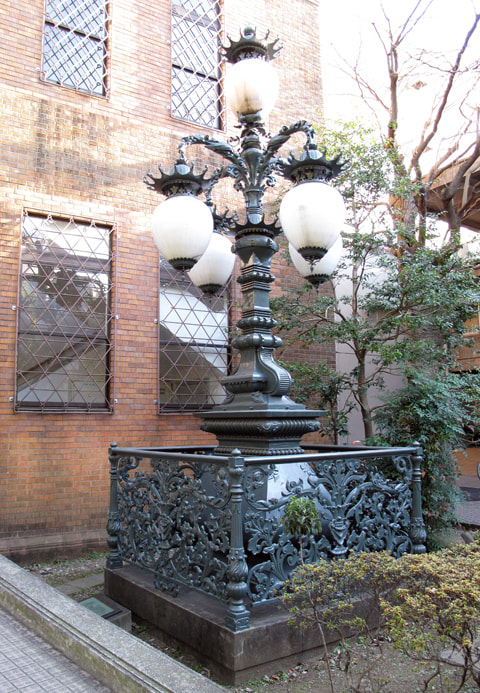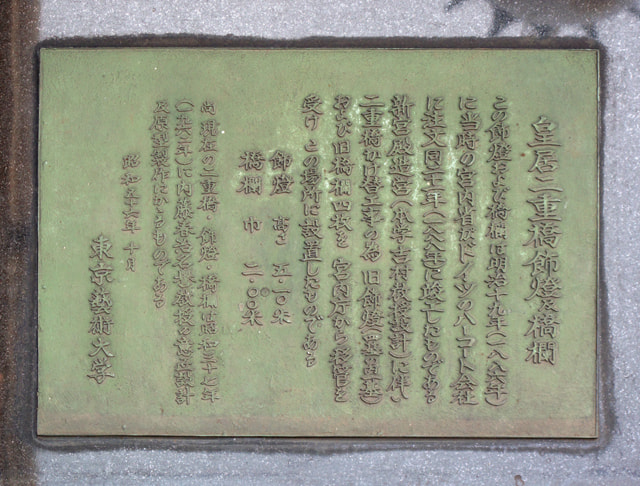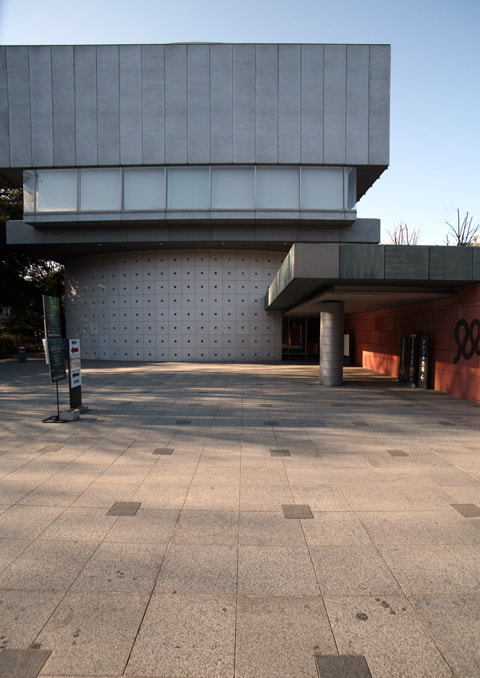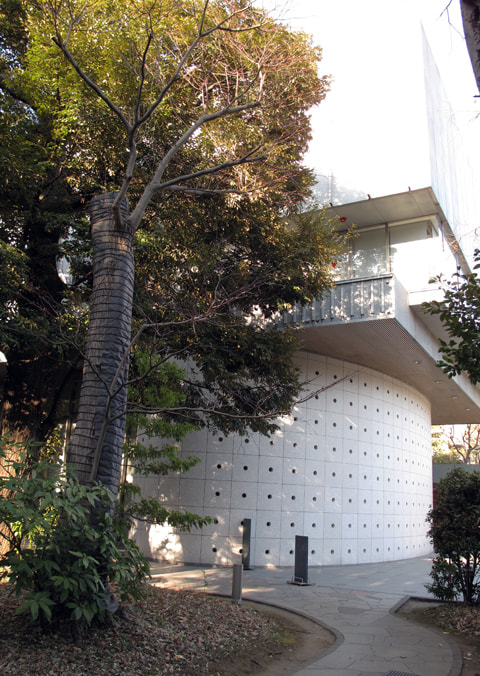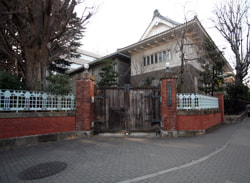
Former main gate of the Faculty of Fine Arts

Main gate of the Faculty of Music
The main gates of the Faculties of Music and Fine Arts formerly stood face to face, but the main gate of the Faculty of Fine Arts was moved to the side facing Tokyo Metropolitan Art Museum when the University Art Museum was constructed.
Q: What do you think about future plans?
Miyata: I think it is ideal to integrate all campuses in one place and conduct education and researches. However, it is realistic to utilize the present locations, and take approaches in which we cooperate with local communities. There are many important cultural facilities in the Ueno area. Also, the Ameyoko shopping street is located at the foot of the hill of Ueno. I think such a culturally rich area is rare in the world. We want to collaborate closely with those cultural facilities, and further encourage development of Ueno. (continued in the lower column)
Plate attached to the former streetlamp and parapet
The control of the former streetlamp and parapet, which is now placed in front of the Chinretsukan Gallery, was transferred from the Imperial Household Agency when the former streetlamp and parapet of the Double Bridge was replaced with the present ones (designed by Professor Emeritus Haruji Naito) as the new Imperial main palace hall was constructed in 1962. The former streetlamp and parapet was made by Harkort'sche Fabrik, a German steelmaker, in 1888.

Q: "Shakai Renkei Center," or social cooperation center, is set up in the school. What did you think about it when you assumed the position of the president?
Just when I wanted to promote cooperation with society, national universities were reorganized as corporations, and I became the president in 2005, after two years of the reorganization. I thought cooperation with society and local communities became more important than ever before, so I decided to promote it. Our cooperative activities with local communities include the GTS (Geidai, Taito, Sumida) Sightseeing Art Project. I hope that students go out from the campus into the downtown and cooperate with community people to carry out hands-on educations, and that further development and growth are realized while mutual understanding with local people is advanced through art. (continued in the lower column)
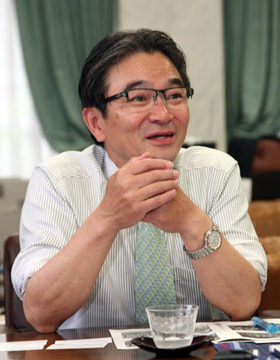
Q: How many foreign students are enrolled?
There are about 120 foreign students out of approximately 3,200 students, and most of foreign students are graduate students. Not surprisingly, many foreign students come from China and Korea, and many of them will play central roles in cultural and art administration in their countries after graduating from this school. Although, in addition to Japan, Asian countries have followed Western countries and study Western cultures, from now on, it might be possible to create an opportunity for people throughout the world to learn the appeal of the East. Some foreign students told me that "although we are postwar foreign students, we heard about our predecessors' experiences, who studied at Tokyo Fine Arts School or Tokyo Music School before the war, so we decided to study abroad, and chose Tokyo University of the Arts instead of universities in the West." They also said that cultures and art exist beyond emotional responses to the Second World War. When I listened to those talks, I wept with joy. (continued in the middle right column)
Q: Are there any opportunities to mingle with graduates and foreign students?
There are "Morinokai" (Faculty of Fine Arts) and "Doseikai" (Faculty of Music) as graduates' associations. Foreign students also organized graduates' associations in May 2010 in China, Korea and Taiwan. There are "Chugoku Dogakukai (Fine Arts), Chugoku Dogakukai (Music)" (China), "Bijutsu Daigaku Domonkai, Ongaku Daigaku Domonkai" (Korea) and "Taiwan Koyukai" (Taiwan) in respective countries. When I took students of an attached music high school to Beijing, there was an opportunity that high school students in Beijing sang "Sakura Sakura," or cherry blossoms, cherry blossoms, in Chinese language and the students from Japan sang "Jasmine," which is an equally popular song in China as "Sakura Sakura" in Japan, in Japanese language. Finally, they sang the songs together. I was really moved when I listened to the songs. I felt that we should continue to embrace the Asian identity in order to send out cultures from East Asia to the West.(continued in the next page)
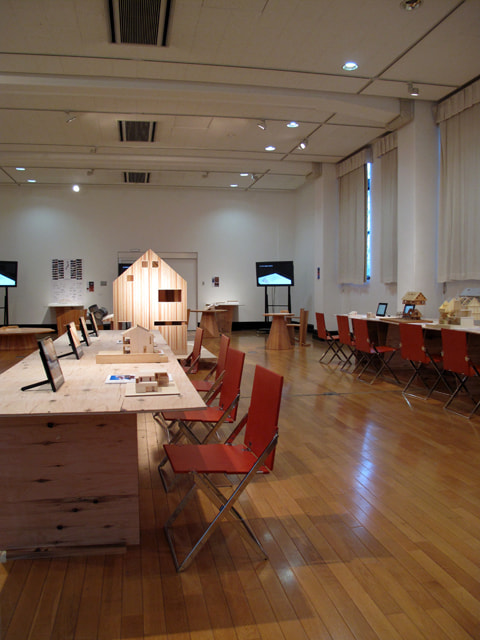
Chinretsukan Gallery, 1st Floor


Former main gate of the Faculty of Fine Arts

Main gate of the Faculty of Music
The main gates of the Faculties of Music and Fine Arts formerly stood face to face, but the main gate of the Faculty of Fine Arts was moved to the side facing Tokyo Metropolitan Art Museum when the University Art Museum was constructed.











